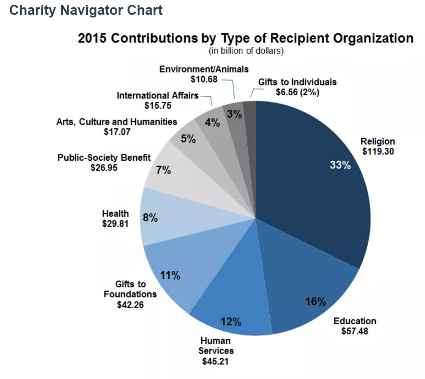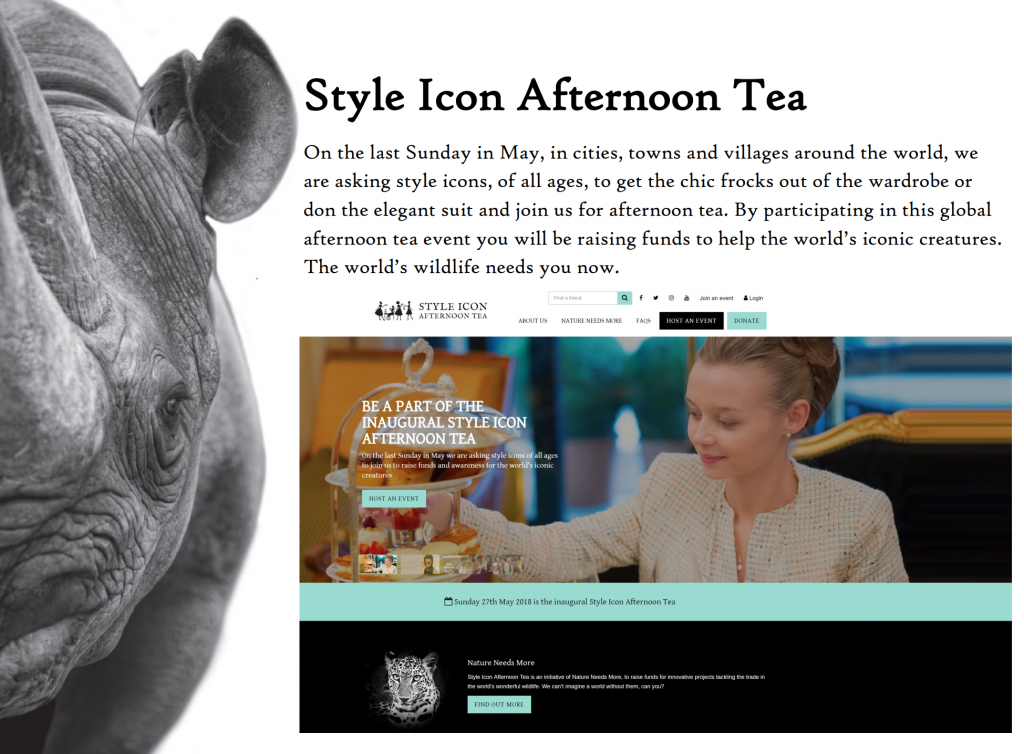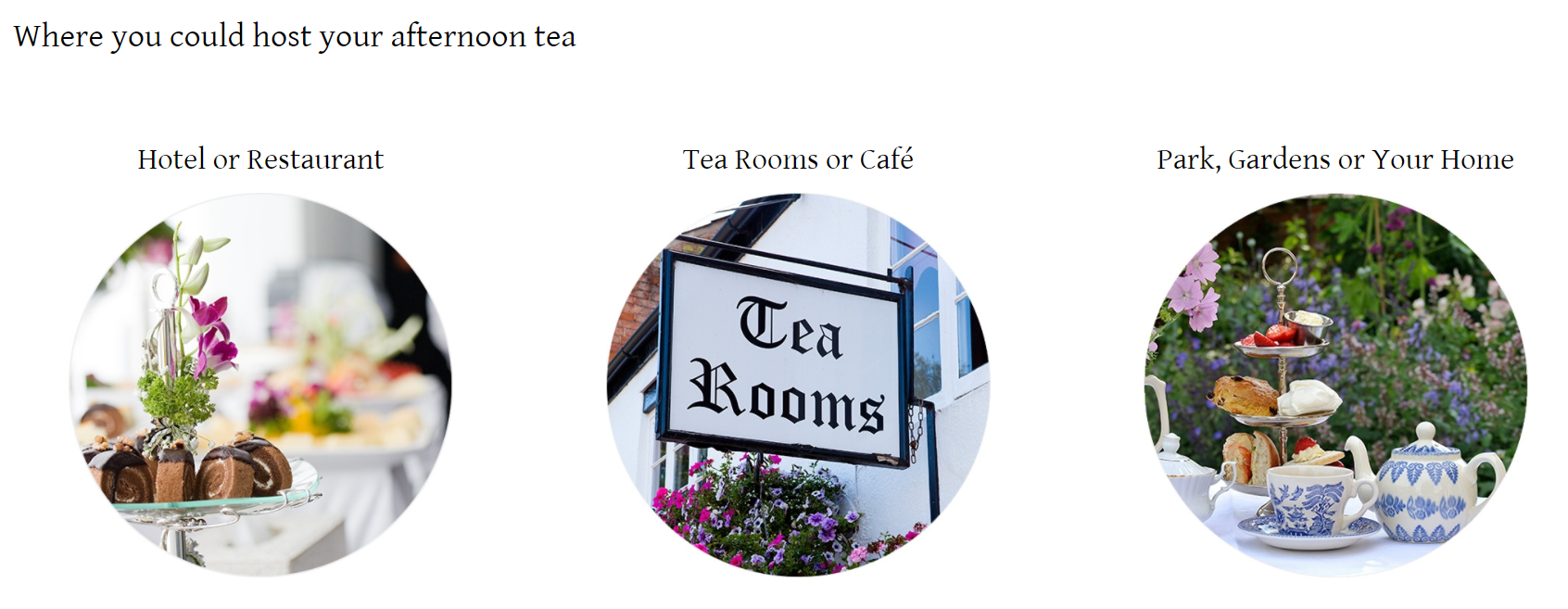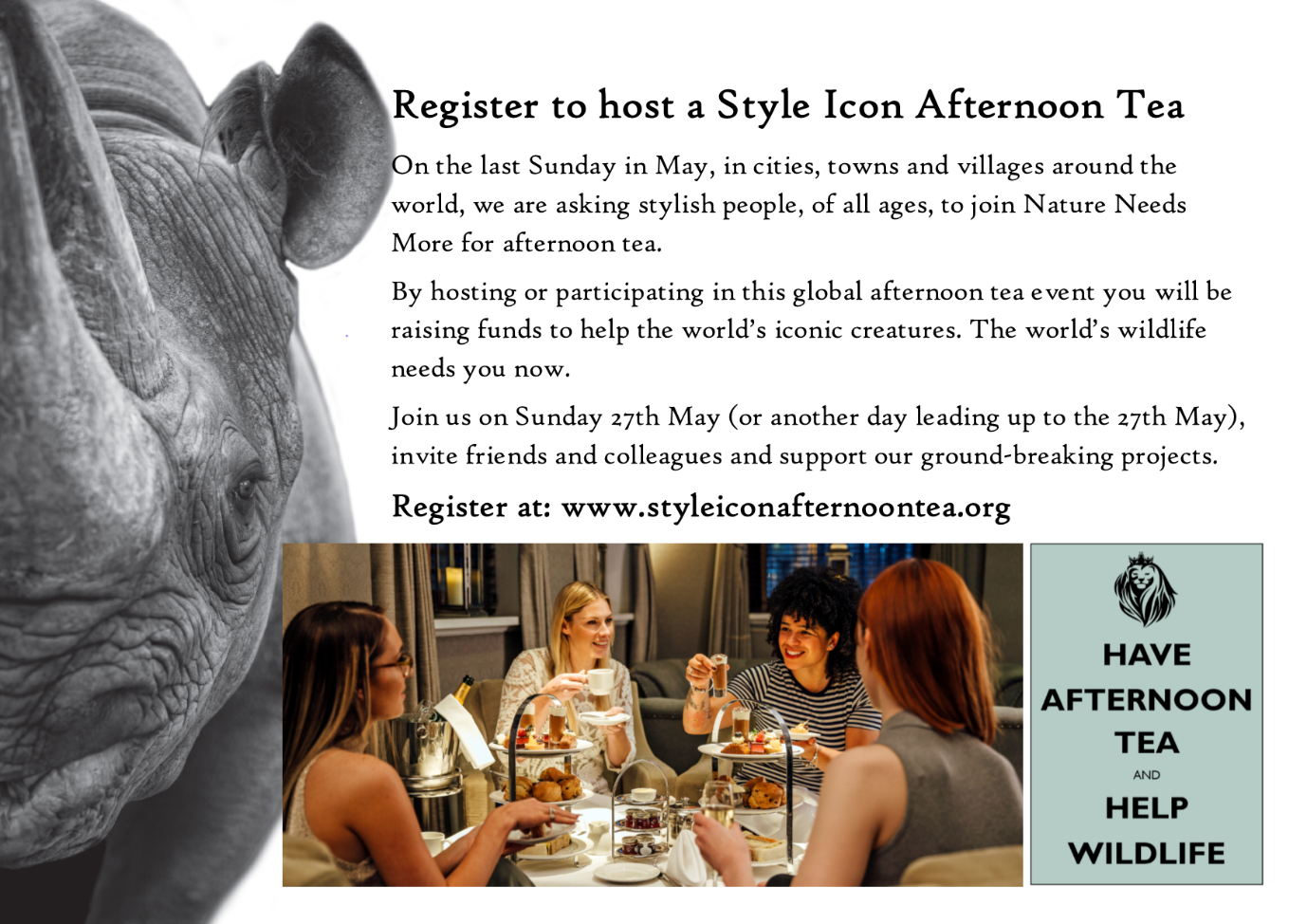Interesting Facts
Given the need to scale up and roll out our demand reduction campaigns, I decided to investigate who already donates to wildlife conservation and where donations go. Culturally the USA has a strong tradition of private individuals making donations, so it seemed the obvious place to look at the statistics on giving (who, what, where etc.).
 My starting point was the information collected by Charity Navigator , I used their published information to do a ‘back of the envelope’ calculation. In 2016, the last year that the full statistics were available, 3% of all donations went to Environment/Animals. When you drill down in to this, the 3% covers 960 organisations, of which 99 are classified as Wildlife Conservation. So even if you assume an equal distribution across all these organisations (as I said, back of the envelope calculation), this means that only 0.3% of all (non-government) donations in the US goes to wildlife conservation.
My starting point was the information collected by Charity Navigator , I used their published information to do a ‘back of the envelope’ calculation. In 2016, the last year that the full statistics were available, 3% of all donations went to Environment/Animals. When you drill down in to this, the 3% covers 960 organisations, of which 99 are classified as Wildlife Conservation. So even if you assume an equal distribution across all these organisations (as I said, back of the envelope calculation), this means that only 0.3% of all (non-government) donations in the US goes to wildlife conservation.
My thoughts then turned to the mismatch of 0.3% of donations compared to the outpouring of emotion we see on social media, for both:
- Those soft, fluffy, fuzzy, warm, lovable images we see for wildlife, and
- The outpouring of anger and vitriol vented over images of the tragedy of poaching
This mismatch between strong positive/negative emotions and the lack of donations just doesn’t equate for me. On behalf of the wildlife we love, and in the spirit of the controversial Tourism Australia campaign we have to ask “So, donors, where the bloody hell are you?”
(Re)Building the Conservation Donor Base
I recently read a paper that stated that conservation is underfunded by $300billion to $400billion dollars per annum. While this included government, as well as private, commitments, we must accept that the natural world cannot be protected and rehabilitated with 0.3% of non-government donations per year, so we need to think about how to re-engage the people who have stopped giving to conservation and influence new groups of donors, who haven’t, as yet, contributed to the natural world.
For Nature Needs More this means that to scale up and roll out our RhiNo demand reduction campaigns, whilst we need the support of our current and supportive donors, we must also consider:
- How to re-engage the many private donors who have walked away from conservation, over the last decade or more because they stopped believing in corporate conservation. Some of our donors already fall in to this category; donors haves commented “Giving to your [BTB] demand reduction campaign is the first donation we have made to conservation in years, because it is the first thing that we believe could make a real difference in years” We need more of these people from around the world (currently, about 90% of all our donations come from Australia and New Zealand).
- How to access new groups, who maybe haven’t traditionally thought about giving to wildlife and the natural world. This includes groups of people who have a huge capacity to consume wildlife ‘products’ and may currently have a desire for these types of pseudo-‘luxury’ goods.
The Style Icon Afternoon Tea
 In considering group 2, we decided to create a global fundraising event that would appeal to a broad group of people, some of whom don’t necessarily think about donating to wildlife causes; we would like to introduce the Style Icon Afternoon Tea .
In considering group 2, we decided to create a global fundraising event that would appeal to a broad group of people, some of whom don’t necessarily think about donating to wildlife causes; we would like to introduce the Style Icon Afternoon Tea .
Our aim is to grow this event over the coming years to raise the funds for our trailblazing programs to help the world’s iconic wildlife. The 27th May 2018, is the inaugural event, just 10 weeks away. Our goal for this first year is to raise a minimum of $50,000 which will go to the next RhiNo demand reduction campaign in Viet Nam. We aim to raise in excess of $100, 000 for this rhino horn demand reduction campaign.
Host A Style Icon Afternoon Tea
I am looking for global pioneers who will sign up to host a Style Icon Afternoon Tea in their city, town or village and be a part of this inaugural, global tea party in support of wildlife. These events can be large or small, public or private.
As a host you can tell your guests as little or as much as you want about the illegal wildlife trade and what you are raising the funds for (there will be resources for you to use that you can download or link to from the website). Again, as a host, you know your guests and are the best person to decide what they will and won’t be comfortable hearing about. By asking them to donate to a wildlife cause, something they may not have done before, you are ‘planting the seed’ that the worlds wildlife needs support.
Now I know that many people who care about wildlife and conservation are quite introvert by nature, so if hosting an event is something you don’t see yourself doing, then ask your extravert friends to register and get involved!
I have lost count of the number of people who have asked me “What can I do, how can I make a difference?” I know lives are busy, so involvement needs to be ‘chunked’ and ‘planned in advance’. I hope that hosting an afternoon tea is something you can do or would be willing to encourage an extravert friend to do! The message is don’t just read this and then forget about it, but share it and share it widely. There are over 700 subscribers to the Nature Needs More blog, how can you help get this message out.
 We already have events registered in London, Melbourne, Venice and Singapore to name just a few. Nature Needs More’s aim is to grow this annual, global tea party worldwide and we have a particular focus on the Asian region, as a ‘covert’ way of having more people in the region get recognition for raising funds to tackle the illegal wildlife trade, as they do something they enjoy (and apparently afternoon teas are BIG in China).
We already have events registered in London, Melbourne, Venice and Singapore to name just a few. Nature Needs More’s aim is to grow this annual, global tea party worldwide and we have a particular focus on the Asian region, as a ‘covert’ way of having more people in the region get recognition for raising funds to tackle the illegal wildlife trade, as they do something they enjoy (and apparently afternoon teas are BIG in China).
As you know, my time spent researching the international wildlife trade, in both the demand and range countries, and the global conservation industry has been eye-opening. While I have seen and heard too many tragic wildlife stories, I have also met many people whose work brings me a great deal of hope for the natural world. What is becoming more-and-more apparent is that the conversation about wildlife and the natural world is changing; more people know that they need to get active. We can make a difference if we are more active. What we can’t do is leave everything to corporate conservation and governments, particularly if they spend too much time in a ’business as usual’ mindset; we have passed the time for BAU.
Finally, if you do decide to join this inaugural, global event, as the stylish pioneer you are, there are 4 final things to know:
| Let us know your plans and we can help promote your event |
Take lots of photographs, so we can feel like part of your event |
Don’t forget the boys |
 |
 |
 |
And most importantly, thank you from the world’s iconic wildlife, they need more people to chip in and help:
More to come: As the people who have followed Breaking The Brand and Nature Needs More know, from day one we have openly shared our thinking, research, insights and ideas. In the next blog, we will share more about how this event has been designed as part of our Re-Inventing Magnificence strategy and tackling the desire for luxury wildlife products.
Like to read our blog posts? Subscribe Here.





